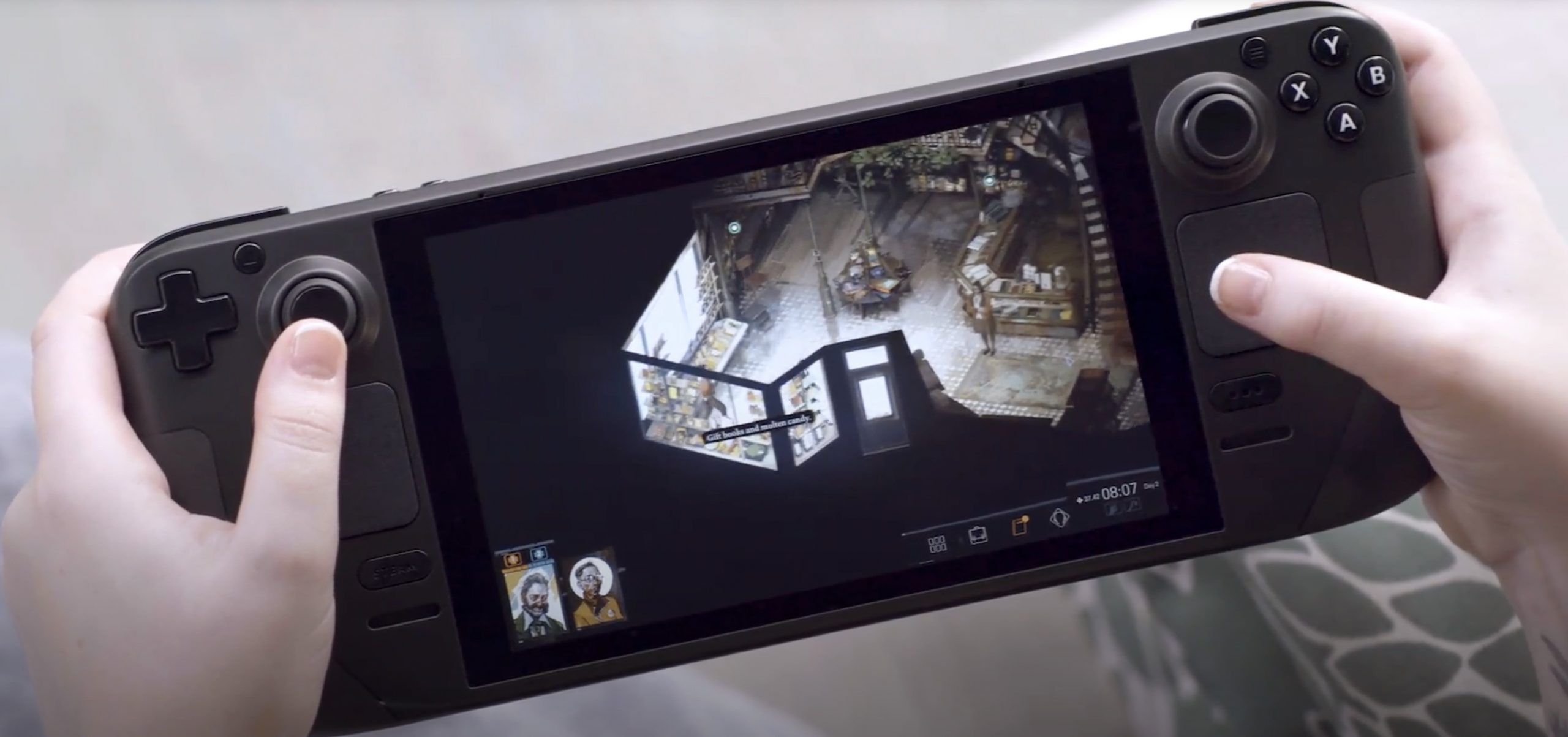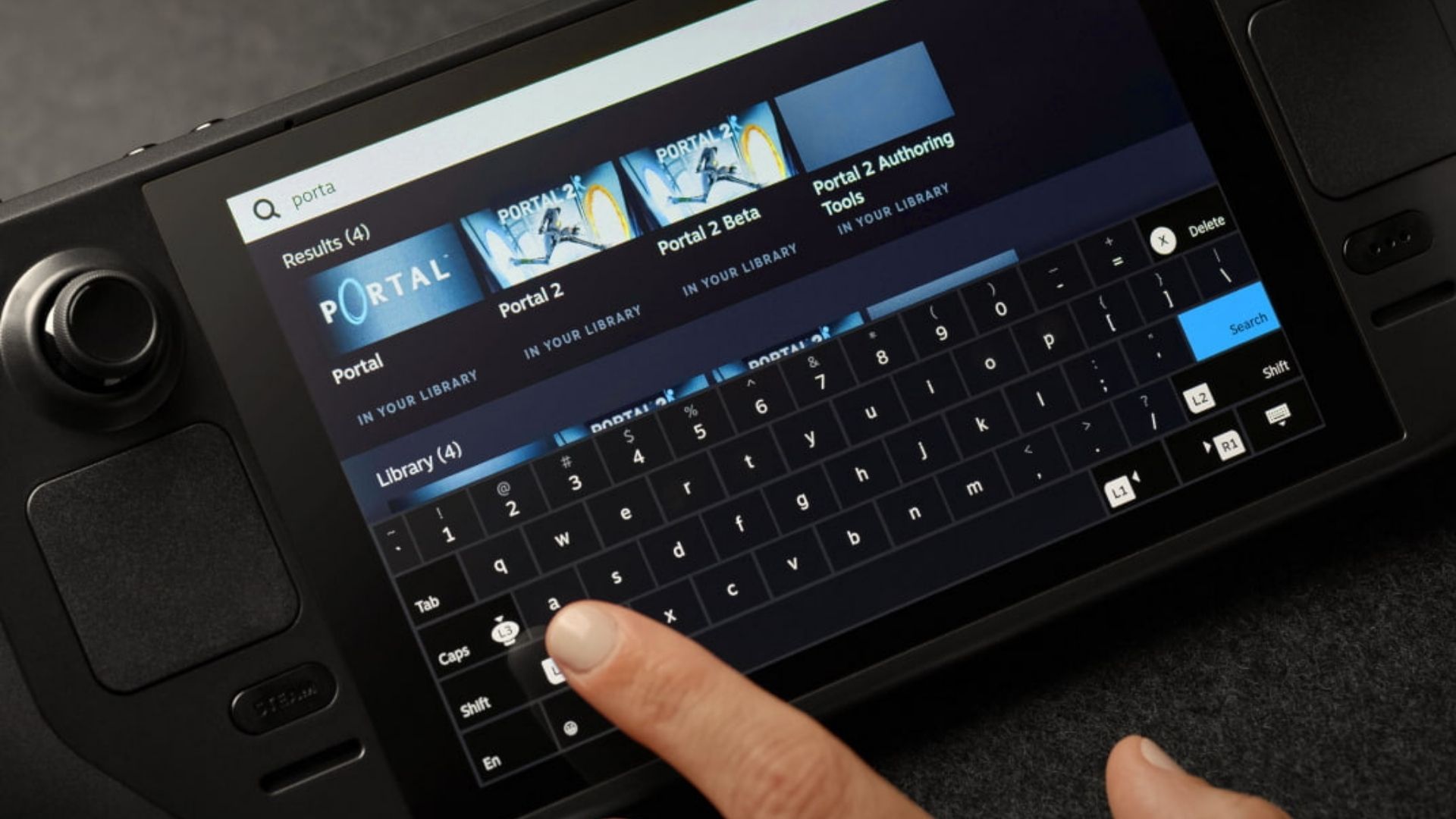Following a long line of rumors and anticipation, Valve has finally unveiled the previously known Steam Pal – now confirmed to be named the Steam Deck. The Steam Deck is a handheld PC running on SteamOS, that claims to be capable of handling most of the games available on the Steam marketplace.
The Steam Deck’s form factor makes it an obvious target for drawing comparisons to the Nintendo Switch, whose popularity is part of the reason why Valve aims to enter this space at all. However, it’s a great deal more powerful than the Switch and should be able to stand on its own two feet against next-gen consoles – to an extent, of course.
The CPU

Steam Deck uses a custom AMD APU – an accelerated processing unit, which contains both the CPU and GPU chips in a single die. As has already been revealed, the Steam Deck uses a CPU based off of AMD’s latest Zen 2 architecture and is equipped with a total of 4 cores running at anywhere from 2.4 to 3.5 GHz. The chip is also equipped with AMD’s Simultaneous Multi Threading technology, which bumps the logical core count upto 8.
Much like the Steam Deck, all next-gen consoles also utilize the same Zen 2 architecture with a custom AMD CPU. The only differences being in core counts – PS5/Xbox Series X/Xbox Series S all have 8 cores/16 threads and operating frequency – PS5 up to 3.5 GHz, Xbox Series X up to 3.8 GHz, and Xbox Series S up to 3.4 GHz.
The Steam Deck has seemingly less than half the raw horsepower when compared to next-gen consoles, particularly more so given that the former cannot probably sustain peak performance over long periods of time – thanks to thermal and battery-life constraints. However, it’s quite smart that Valve went with what is essentially an 8-core chip with an architecture that boasts great single-core performance as well. Games running on engine that take advantage of more cores will perform a lot better than ones that aren’t designed around making full use of distributed horsepower, of course.
GPU

The Steam Deck’s GPU is also based on AMD’s latest RDNA 2 architecture, and sports a total of 8 Compute Units(CUs) running at a variable clock speed of 1 – 1.6 GHz. Valve touts the GPUs horsepower to be around 2 TFLOPs, which is obviously enough quite a bit lower than the PS5 and Xbox Series X which utilize the identical RDNA 2 architectured 36 CUs at 2.23 GHz and 52 CUs at 1.8 GHz to achieve 10 and 12 TFLOPs respectively.
Interestingly enough, the Steam Deck is quite comparable to Xbox Series S in this regard, which has 20 CUs running at 1.565 GHz to achieve a raw grunt of 4 TLOPs of power. While a measurement of GPU power solely by TFLOPs may be inaccurate in many cases, it’s quite self-explanatory here given that all of these platforms use the same architecture. Of course, the point remains that the Steam Deck is again, a handheld with a number of thermal constraints that cannot allow the chip to consistently soar at its highest.
Memory

The Steam Deck uses a total of 16 GB of LPDDR5 memory running at a frequency of 5500 MHz, which will act as a central resource pool to be used by both the CPU and GPU. It’s quite similar to consoles in this regard, since the PS5 and Xbox Series X have the same amount of memory albeit of the GDDR6 variant. Of course, the choice of GDDR memory in consoles allows for higher memory bandwidths which by extension, allows the GPU chips to reach its full potential. The choice of using an APU for a PC has this obvious disadvantage, but it’s not so grave as to be off-putting as all integrated GPUs (such as the Vega 8) share system RAM to great performance results.
With regards to secondary storage, the Steam Deck comes in 3 variants, all come with a 64 GB eMMC flash storage. The higher end models also feature SSDs of 256 and 512 GB, which Steam Deck’s official store page describes as being high speed NVMe SSDs. There’s not a whole lot of information about its speed, except the fact that they are of the PCIe Gen 3 variant, probably utilizing some form of 4x expansion slot in the motherboard. PCI-e 3.0 x4 has a theoretical max bandwidth of around 4 GB/s, however that number can be lower depending on the speed of the SSD.
The next-gen consoles on the other hand have advertised their SSDs as being “game-changing”, with games like Ratchet and Clank: Rift Apart basing their core mechanics around making full use of this technology. The PS5, Xbox Series X, and Xbox Series S all have PCI-e 4.0 SSDs, which boast great transfer speeds. These SSDs are incredibly performant as well as expensive, with an expansion card for Xbox Series X/S costing over $200.
Keeping this in mind, it’s absolutely no surprise that the Switch Deck provides no competition to next-gen consoles in this very regard and to some extent, nor should it. Console games going forward will be made keeping these high-speed SSDs into consideration, allowing for more detailed and expansive worlds. The Steam Deck is a PC handheld after all, and while the platform does have advanced technology like DirectStorage, it isn’t so widely-adopted that developers consider it a given while designing games. In hindsight, it seems to be great judgement on Valve’s part as it tries to cram as much power and performance into facets which matter.
Performance
On the topic of performance, let’s talk about how the Steam Deck performs. It’s now been ascertained that the Steam Deck is a lot less performant than a PS5 or Xbox Series X, however the fact that Valve intends users to have a pleasant 720p experience makes the ordeal a lot more promising. Of course, it’s impossible to ascertain exact performance metrics without the original hardware and tools in hand. However, a baseline can speculatively be established using similarly specced PC hardware. That being said, as of the time of writing, there are no AMD APUs with the combination of a Zen 2 CPU and an RDNA 2 GPU.
The closest comparison for a baseline can be estabilished using a Vega 11 iGPU with a 4C/8T CPU, a shoe that the Ryzen 5 3400G should fill comfortably. Control sticks to a 30 fps cap at a resolution of 720p at low settings. Note that this tests was performed with 8 GB of DDR4 RAM (thanks Youtuber Christo Gevedjov).
In accordance with AMD’s claims, the shift to RDNA 2 GPU from GCN should provide more than a 1.25x boost in performance. That’s without mentioning that Vega 11 has well, 11 CUs while the Steam Deck has only 8 CUs which should ultimately provide a noticeable improvement in performance. Ryzen 5 3400G has also the luxury of being a desktop CPU, which enables it to sustain peak performance of up to 4.2 GHz, which should balance itself out with the jump to a more-efficient Zen 2 mobile processor as used in the Steam Deck.
Thus, it’s understandable that a lot of these results fall in line with what early previews of the Steam Deck seem to suggest. Without harping on the fact too much, running at a resolution of 720p allows the handheld to achieve some great performance numbers in a wide variety of titles. Furthermore, the ability to tweak settings further will also allow for a more personalized and fine-tuned experience.














